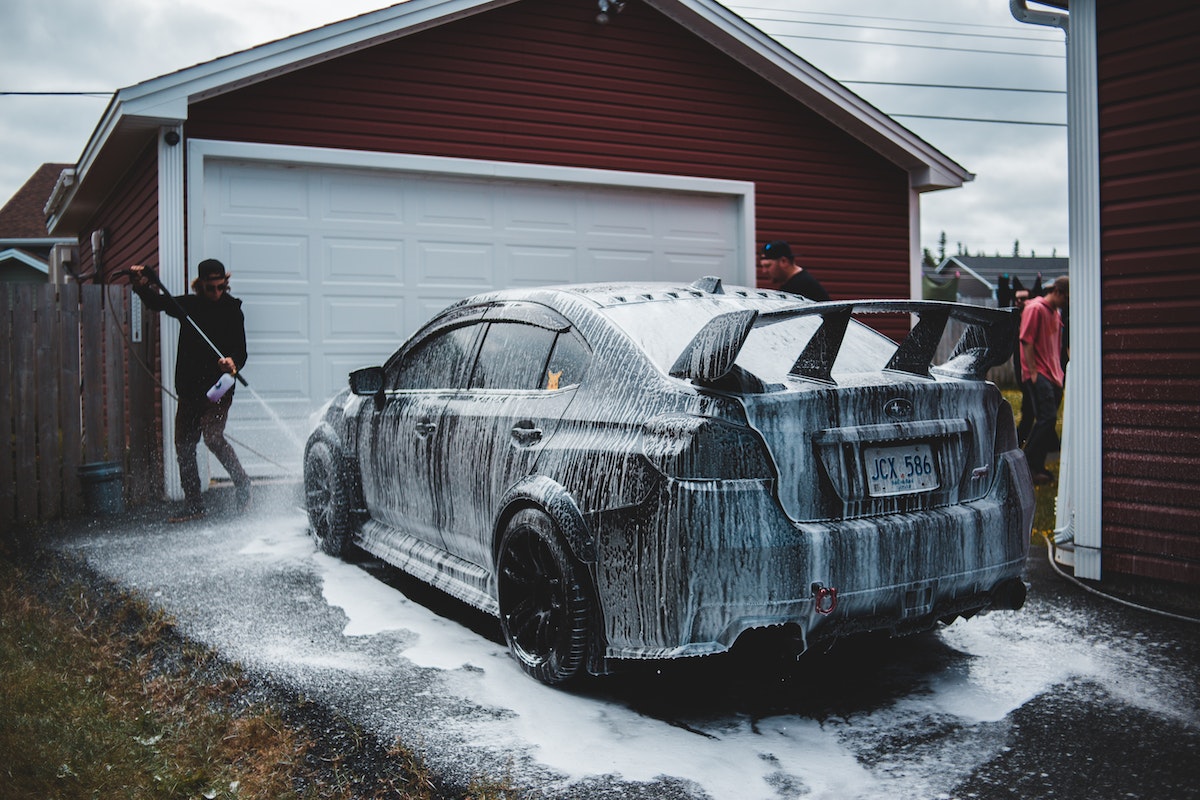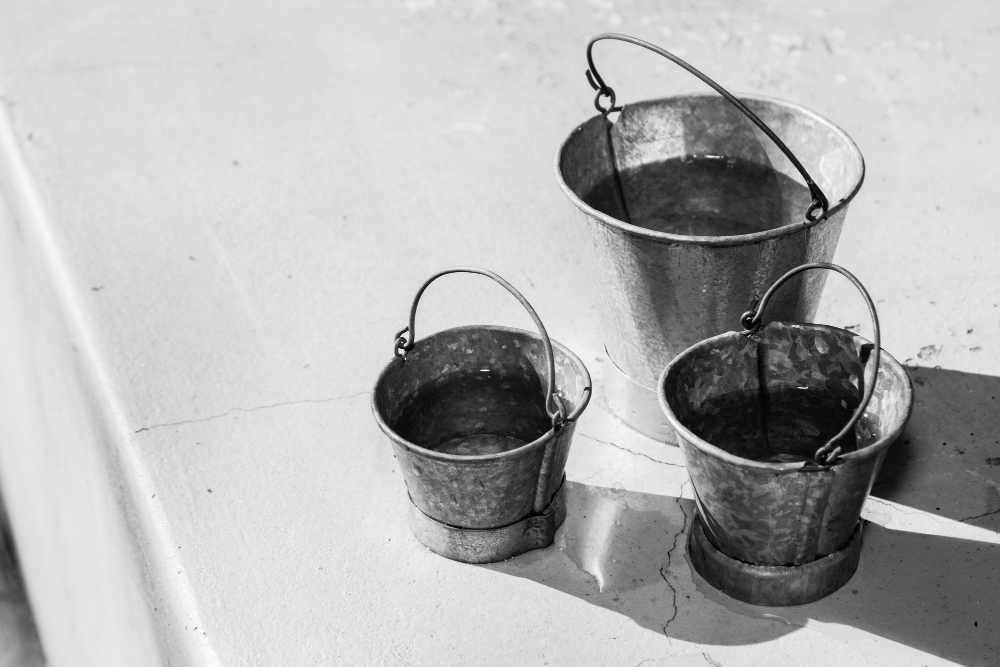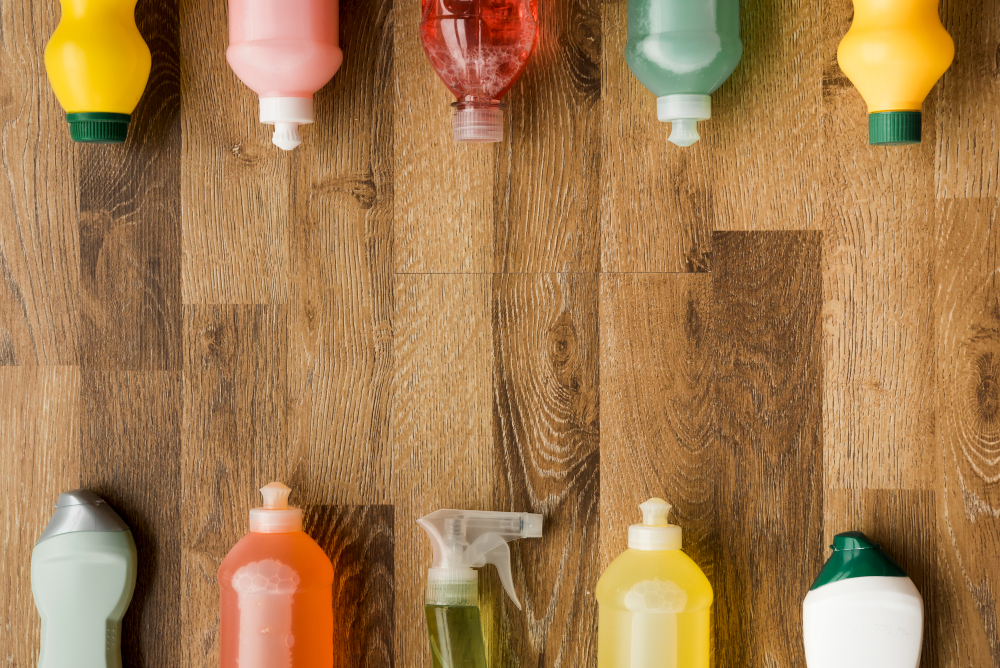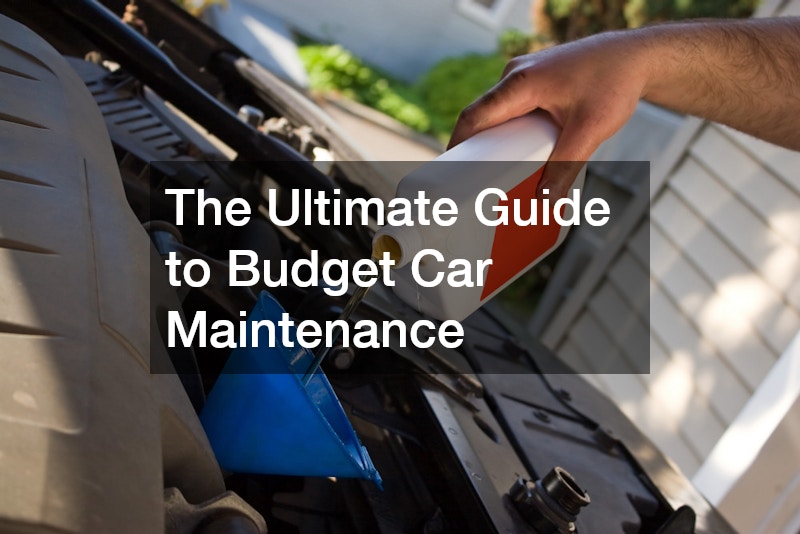Information from The Bureau of Transportation Statistics showed a total of 105,143,990 registered vehicles in 2020. With all these vehicles on the road, it is no wonder why car washing is a popular activity.
And for many people in the United States, a car is second only to a house as their most costly purchase. Ensuring that your vehicle remains operational and looking its best can be essential for preserving your investment – not to mention keeping up appearances! After all, cars are often seen as an extension of one’s personality and sense of style.
One of the best ways to keep your vehicle looking clean and shiny is by doing it yourself (DIY). Car washing can be a fun family activity or a way to relax alone during weekends.
- Car Wash Facilities
- Full-Service Car Wash
- Self-Service Car Wash
- DIY Car Wash
- Benefits and Cost Savings of a DIY Car Wash
- Tools and Supplies for a Successful Car Wash
- Do’s of a DIY Car Wash
- Don’ts of a DIY Car Wash
- Using dirty rags or sponges can cause scratches
- Using dish soap or other harsh chemicals that can strip the car’s wax and paint
- Washing in direct sunlight can cause water spots
- Neglecting to rinse the undercarriage and wheels, where dirt and grime can accumulate
- Not protecting sensitive areas from water and soap.
- Using too much pressure when washing
Car Wash Facilities
Car wash facilities clean the exterior and interior of motor vehicles. They vary from a full-service to a self-serve car wash, so various options are available. Generally, the full-service facilities use high-pressure, hot water and cleaning agents while you stay in your car. A self-service car wash offers coin-operated pressure washers and vacuums that you can operate yourself.
Full-Service Car Wash
A full-service car wash is the ultimate cleaning and detailing package – it takes care of your vehicle’s interior and exterior so that you can drive confidently. With a spotless finish on the outside, there’s no use compromising on maintenance for other essential parts inside the car. A full service-car wash offers more than just an aesthetically pleasing shine; it also ensures that every inch of your ride remains in top condition.
Self-Service Car Wash
With the self-service car wash system, you can free yourself from a rigid schedule and determine how to clean your vehicle best. You have control over which parts of the car need extra attention, giving you complete autonomy in caring for it; plus, this method is more cost-effective than taking it to an automatic system!
DIY Car Wash
Some car owners prefer to do the job themselves instead of going to a car wash. A do-it-yourself car wash can be a cost-effective and rewarding way to keep your car looking its best.
Handwashing your car can be incredibly calming and beneficial for both its exterior state and your mental well-being. Not to mention, it’s the best way to ensure that you keep a new-car finish while spotting any blemishes or possible issues, such as rust formation or loose trimming.
While washing may seem like an easy task, there are still some precautions one must take in order not to scratch or damage their vehicle’s paintwork.
Benefits and Cost Savings of a DIY Car Wash

Regular care and maintenance are essential to preserving your car’s health. Washing it routinely is a necessity. However, hiring an expert for detailing can be expensive for many people, so they wash their vehicles by themselves. Here are some benefits and savings you can get from a DIY car wash:
Customized
DIY car washing can be a gratifying and successful endeavor, as it allows users to connect more directly with their vehicle. To maximize this experience, you should use both handwashing methods and extra coating mechanics in conjunction with each other.
Furthermore, devoting additional time to dry off your automobile after clay or waxing operations is essential to ensure all dirt particles are removed from your car’s surface. Plus, buckets and sponges used for manual cleaning of vehicles are usually much cheaper than their automated counterparts–and may easily be found at any store!
Better Accessibility
Manual cleaning is still necessary to access the nooks and crannies of a car’s body that machines cannot reach. For most car owners, the inside and outside of their vehicle can become equally filthy. With a DIY car wash, you can give attention to each area. Before entering the washing station, hit up one of the vacuums first; this will help rid all that unwanted debris and dirt and clean any fabric or leather upholstery interiorly. Also, remember a quick swipe with a window cleaner on top of the windshield glass for perfect clarity!
Save Water
People need to realize the environmental advantages of a self-service car wash. As you are in control over how long your vehicle gets cleaned, it is up to you how much water gets used. Additionally, since these washes occur in a professional space instead of someone’s home, the drained water does not end up running directly into the ground – making this type of car washing eco-friendlier than any other option!
Budget-Friendly
Self-serve is cost-effective and inexpensive compared to a professional car detailing service. As you only pay for the resources used, getting maximum value at just a fraction of the price is possible when done correctly. So, you can save money on the materials and equipment when you opt for a do-it-yourself car wash. With some resourcefulness and savvy, you can clean your car without needing many coins in the machine!
Contentment
There’s a special satisfaction that comes with achieving something on your own. That’s why DIY car washes are such a great idea! Not only do you save money in service fees, but they also provide an opportunity to learn and improve over time. From basic cleaning options to more advanced techniques, you can make your vehicle look new for much less than other alternatives.
Tools and Supplies for a Successful Car Wash
A DIY car wash can be made much easier when you have the essential tools and supplies. These items will help you to get that professional-looking finish without the high cost:
Microfiber Towels or Car Washing Mitts
Microfiber towels or car washing mitts are essential for cleaning your car. These items are designed to remove dirt and debris without scratching the paintwork, making them perfect for any DIY car wash job. Avoid regular scrubbing sponges on your car, as they may cause lasting damage by scratching the paint or finish.
Car Wash Bucket

To effectively clean your car, you’ll need at least two buckets; a third may also be necessary. The first should contain soapy water, and the second will hold plain water for rinsing your rag or mitt. If needed, a separate container of fresh water can be used specifically when cleaning the turbulent wheel area, which tends to harbor more grime than other sections of the vehicle. This simple setup allows you to ensure that dirt is never re-applied onto surfaces during washing – giving you an immaculate finish every time!
Car Wash Soap
When it comes to car wash soap, the milder, the better. Don’t be tempted to use dish detergent for your home car washes since it’s not a good idea! Instead, it would help if you went with soaps specifically made for cars. These soaps will all get the job done effectively and safely.
High-Pressure Hose
A high-pressure hose is essential for anyone looking to wash their car properly. While you can wash your car without one, it’s much more efficient and effective when you have access to one. High-pressure hoses provide the power necessary to remove dirt and grime quickly and evenly and provide a more thorough rinsing so that your car is free of any residue.
Car Wax
Using car wax can help protect the paint and finish of your car for extended periods. After washing your car, you should apply a coat of wax to lock in that beautiful shine. There are many different types of waxes available, and they will all provide varying levels of protection, so it’s important to do some research and choose the one that best suits your needs.
Microfiber Cloths for Buffing and Polishing
It would be best if you also got microfiber cloths for buffing and polishing your car after cleaning it. The fabric is designed to pick up dirt, dust, and other particles from the vehicle’s surface. They will also help remove any smudges or fingerprints that may have been left behind during the washing process.
Choosing the right tools and supplies for a DIY car wash is essential for achieving the best results. Make sure you have all the necessary items before you begin so your car looks its best every time!
Do’s of a DIY Car Wash
Ensuring your vehicle is clean and well-maintained requires one to observe the following do’s when washing:
Choosing the right soap and washing solution
Choosing soap and washing solutions designed for cars is essential when washing your car at home. Regular soap can be too abrasive and strip away the wax on your vehicle, leaving it unprotected and vulnerable to dirt buildup.
Using a wash mitt or sponge to avoid scratches
A wash mitt or sponge is designed to distribute the soap and water on your vehicle’s surface evenly so that you don’t scratch its paint. It is best to use a separate mitt for each section of the car – from the bonnet to the boot.
Using the right technique to wash and rinse your car
It would help if you used a light circular motion to wash and rinse your car. The technique helps to remove dirt and grime more effectively while still being gentle enough not to scratch the paint. Additionally, after each section is washed and rinsed with soap, you should finish off by using a hose jet setting on a direct stream to push any remaining particles away from your car’s surface before drying it off with a microfiber cloth.
Rinsing thoroughly to remove all soap suds
You should also rinse your car thoroughly after washing it to ensure that all soap suds are removed. If any of these remain on the car’s surface, they can attract dirt and cause the paint to become dull over time.
Drying the car to prevent water spots
Drying your car after a wash is also essential. This helps to prevent water spots from forming on the car’s paintwork, which can dull its appearance over time. It’s best to use a microfiber cloth for this step, as it won’t scratch the surface and will help to absorb any remaining moisture.
Don’ts of a DIY Car Wash
When you clean your car yourself, you should also avoid the following practices:
Using dirty rags or sponges can cause scratches
Dirty rags or sponges can cause scratches on your car’s paintwork. This is because dirt particles can stick to the fabric or sponge and then scratch your car while cleaning it. Instead, use clean microfiber towels or mitts for every car wash.
Using dish soap or other harsh chemicals that can strip the car’s wax and paint

Washing your car requires soap specifically designed for vehicles. Dish soaps or other harsh chemicals can strip away the car’s wax and paint, leaving it unprotected and vulnerable to dirt buildup.
Washing in direct sunlight can cause water spots
When you wash your car under direct sunlight, it’s more likely that water spots will form on the car’s paintwork. To prevent this, it is best to wash your car in a shaded area or avoid washing it when it’s too hot outside.
Neglecting to rinse the undercarriage and wheels, where dirt and grime can accumulate
Another common mistake is to neglect the undercarriage and wheels when washing your car. Grime can quickly accumulate in these areas, so giving them a good rinse with a hose jet setting on a direct stream before you finish up is important.
Not protecting sensitive areas from water and soap.
The water and soap used for washing can damage your car’s plastic trim and door edges. To protect these areas, you should use wax or sealant to create a barrier between them and the elements.
Using too much pressure when washing
When washing your car, you should always use a light touch. Too much pressure can cause scratches and swirls on the paintwork, which can be hard to remove.
Instead of spending extra cash at the car wash, why not tackle it? A DIY car wash is an easy and economical way to keep your vehicle clean, shiny, and looking its best. By following these dos and don’ts of a successful scrub-down, you can maximize time spent while avoiding common mistakes that could damage or dull your precious ride. So let’s get ready – grab those towels and soap. You’re about to dive into the world of DIY car washing!






